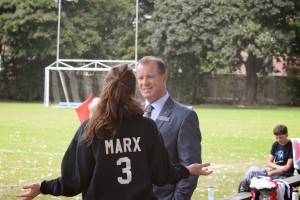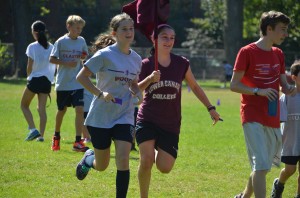 Last weekend was a wonderful display of the strength of community at LCC. We hosted dinner for more than 200 alumni on Friday evening, followed by an upbeat open house Saturday morning for prospective students. Faculty, staff, students and parent volunteers showed off our facilities and programmes throughout the morning. In the afternoon, alumni played soccer and members of the 50th Reunion class toured new facilities, reminisced and shared lunch on campus. Essentially, all of our key school constituents gathered and collaborated with pride to present our school to visitors.
Last weekend was a wonderful display of the strength of community at LCC. We hosted dinner for more than 200 alumni on Friday evening, followed by an upbeat open house Saturday morning for prospective students. Faculty, staff, students and parent volunteers showed off our facilities and programmes throughout the morning. In the afternoon, alumni played soccer and members of the 50th Reunion class toured new facilities, reminisced and shared lunch on campus. Essentially, all of our key school constituents gathered and collaborated with pride to present our school to visitors.
Every September we host our alumni LIONfest evening with a focus on reunion classes from 10 to 50 years. All alumni were welcome – and we were particularly excited to have two gentlemen here for their 72nd class reunion. Regardless of age, our graduates affirmed that their LCC experience has provided them with important foundations and friendships that have remained meaningful long after graduation. Each class has a mix of people living in Montreal and elsewhere. However, it is amazing how strong the bonds remain, despite time, distance, and shifting dynamics brought on by marriages, families and careers.
For our older alumni, their school is still at 4090 Royal–the same address as when they attended. However, with our newer facilities, especially those built since 2000, many felt today’s LCC was quite unrecognizable The alumni were very impressed with facility and programme development and openly encouraged us to continue to improve, while holding true to timeless values and high standards.
So if the alumni experience was about reconnecting, reflection and reminiscing, our open houses on Saturday morning, and again on Tuesday, were the opposite. They were about the future, about possibility, potential and the promise of tomorrow.
We hosted hundreds of visitors and the school looked great. My thanks to faculty and staff who were here to describe programmes and answer endless questions. However a special thank you goes to all of our student “Ambassadors”. They were proud hosts who provided a warm welcome to our many guests and prospective LCC families. No matter how much preparation we adults make as teachers, staff and administrators, it is actually the students who leave the greatest impression on visitors. It is evident in their tone, level of enthusiasm, and knowledge of different school programmes and history. It is their sense of humour and keen involvement in a wide variety of school activities that leave a lasting impression. They are the difference-makers in telling the LCC story.
The common element last weekend at all our special events was the importance of people connecting with people. It’s the benefit of a strong community where standards, effort, and involvement matter. Indeed, taking pride makes LCC a very special place. — Chris Shannon, Headmaster



